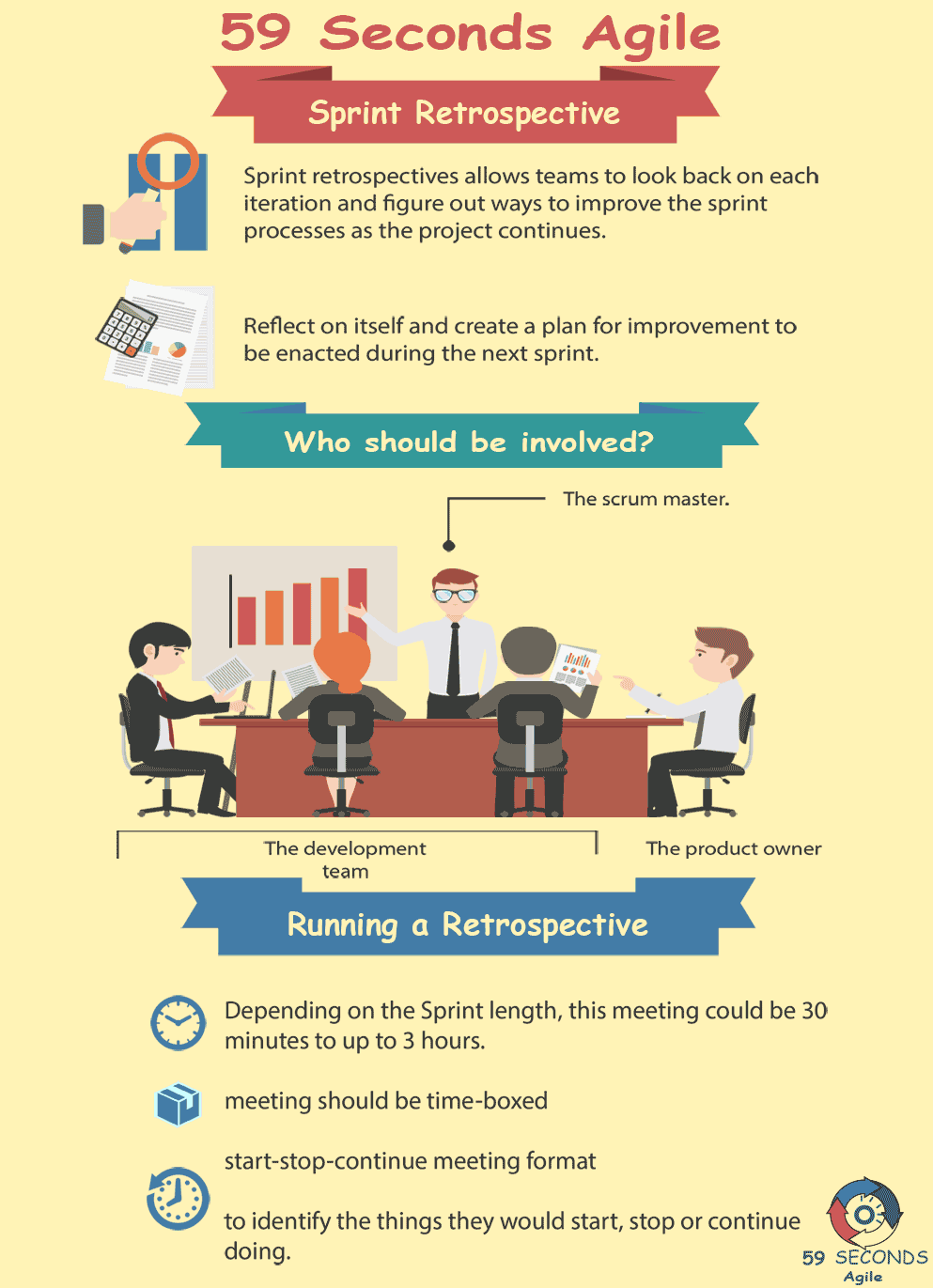
The Sprint Retrospective for Scrum Masters
The Sprint Retrospective provides an opportunity for the Scrum Team to reflect on itself and create a plan for improvement to be enacted during the next sprint. This ceremony is a good way to provide an honest, open, and mature environment for everyone to air their concerns and opinions in a constructive atmosphere. By doing this, a team can continuously evolve and improve production.
Who should be involved?
Retrospectives generally involve three main roles: the development team, the product owner, and the Scrum Master.
The Development Team. Sprint Retrospectives should not be optional to the development team. Sprint Retrospectives are important tools to allow team members to discuss issues and come up with solutions. Each team member should participate in the meeting and offer up suggestions or issues.
Even in teams that are not collocated, conference calls and other tools can be utilized to ensure development team members can participate.
Product Owner: The product owner should be included in the retrospective. They shouldn’t be disruptive and should be there to help support improvement of the team. Having the product owner there as an observer can help alleviate the need for the development team to explain their improvement actions (often against other backlog items) to the product owner and can improve collaboration between the two roles.

Scrum Master: The Scrum Master is an important part of the Retrospective. They play a key role in the success of the retrospective since they are the ceremony facilitator. It is the facilitator’s responsibility to help guide the discussion of the team so it is focused and productive.
Who should be involved?
Scrum Master: As a facilitator, the Scrum Master encourages the Team to discuss issues and bring up topics. Scrum Masters should be transparent about what the purpose of the meeting is and ensure that everyone is clear on the goals. Ensuring that everyone is clear on the purpose of the meeting and that an open environment where everyone can express their views is paramount to the success of the ceremony.
Furthermore, the role of facilitator means that a Scrum Master should listen to the team and communicate with the person speaking in a way that is sensitive and caring. Interruptions should be kept to a minimum and notes should be taken of issues brought up. Keeping track of issues on a whiteboard or using another tool helps team members see patterns that emerge about the issues. This can help with prioritizing improvements in the next sprint.
Our Favourite Agile Books
We found these books great for finding out more information on Agile Scrum:
Running a Retrospective
Sprint Retrospectives don’t have to be long, drawn-out meetings. Depending on the Sprint length, this meeting could be 30 minutes to up to 3 hours. The meeting should be time-boxed with longer sprints having longer retrospectives. These ceremonies should have some structure to them with a plan. The start-stop-continue meeting format is a simple yet effective way to add some structure to a retrospective without it being too rigid.
The main idea of this format is for team members to identify the things they would start, stop or continue doing. The Scrum Master can have Team Members shout out things where team members are free to contribute items as they please or the Scrum Master can go around the room and call on people one by one before opening up the floor to suggestions. It is often beneficial to go around the room one by one for teams that have less vocal members. This ensures that all team members can contribute equally. Then once the list has been created, the team votes on the items that should be implemented in the upcoming sprint.

